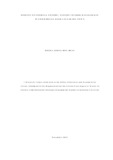EFFECTS OF INTERNAL CONTROL SYSTEMS ON RISK MANAGEMENT IN COMMERCIAL BANKS IN NAKURU TOWN
Abstract
Frequent reports of frauds in the financial sector in Kenya especially within the Banking sector have been reported over the last several years (2008-2014). In the second quarter of 2010, out of 102 corporate fraud cases reported in Kenya, all were associated with inadequate risk control measures by commercial banks. Exposure to such risks affect not only their bottom lines, but also leads to substantial reduction in resources, severe disruptions to the flow of information and communication, loss of records among others. The purpose of the study therefore sought to investigate the effects of internal control systems on risk management in commercial banks in Nakuru. The specific objectives were: to assess the effect of internal control components on the risk management of commercial banks, to assess the effect of internal control measures on risk management of commercial banks, and to investigate the effect of internal control procedures on risk management of commercial banks. The study adopted a descriptive survey design. The target population comprised of 28 Commercial Banks in Nakuru Town. A census was employed and two respondents per bank (one from credit and one from operations department) were purposively selected thus totaling to 56 respondents. Data were collected using structured questionnaires. Data were analyzed using descriptive analysis by use of Chi square while Corelation analysis and multiple regression were used for inferential statistics. The results of the study showed that internal control components (r = .720, α = 0.01), internal control measure (r = .743, α = 0.01), and internal control procedure (r = .701, α = 0.01) were positively and significantly correlated to risk management. Multiple regression analysis showed that internal control components (β =0.485), internal control measure (β =0.189), and internal control procedure (β =0.086) when regressed against Banks risk management in Nakuru Town. Adjusted r2 was 0.87 implying that the regression model can explain 87% of the variability. The study concludes that banking institutions should strive for tighter internal control systems on mitigating risks through components, measures and procedures. It is recommended that attention be given to the strong influences on the internal control systems of commercial banks while strategic objectives and risk management policy of the company be determined at the highest level in the organization and senior management be responsible for the policies to be incorporated into daily operations and to dedicate the necessary resources to achieve this. Further studies should be attempted in assessing the risk management and internal control systems in microfinance institutions‟.

